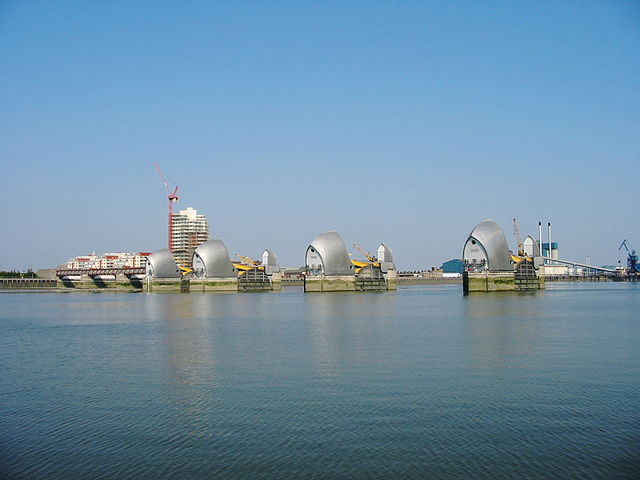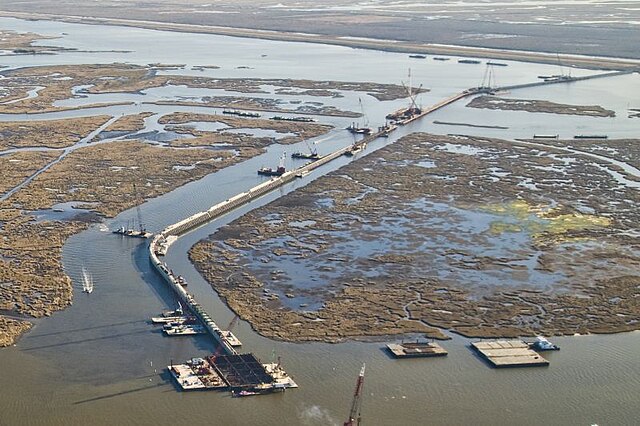A flood barrier, surge barrier or storm surge barrier is a specific type of floodgate, designed to prevent a storm surge or spring tide from flooding the protected area behind the barrier. A surge barrier is almost always part of a larger flood protection system consisting of floodwalls, levees, and other constructions and natural geographical features.
The Oosterscheldekering contains 62 steel doors, each 42 metres (138 ft) wide
The Maeslantkering closes the main entrance to the Port of Rotterdam, the largest port in Europe.
River Thames Flood Barrier
The IHNC Surge Barrier, being built by the US Army Corps of Engineers. The GIWW in the foreground, the MRGO in the background
Floodgates, also called stop gates, are adjustable gates used to control water flow in flood barriers, reservoir, river, stream, or levee systems. They may be designed to set spillway crest heights in dams, to adjust flow rates in sluices and canals, or they may be designed to stop water flow entirely as part of a levee or storm surge system. Since most of these devices operate by controlling the water surface elevation being stored or routed, they are also known as crest gates. In the case of flood bypass systems, floodgates sometimes are also used to lower the water levels in a main river or canal channels by allowing more water to flow into a flood bypass or detention basin when the main river or canal is approaching a flood stage.
Tokyo floodgates created to protect from typhoon surges
A sluice gate on the Harran canal
A flood wall gate at Harlan, Kentucky
A US Army Corps of Engineers hinged bascule crest gate during installation








